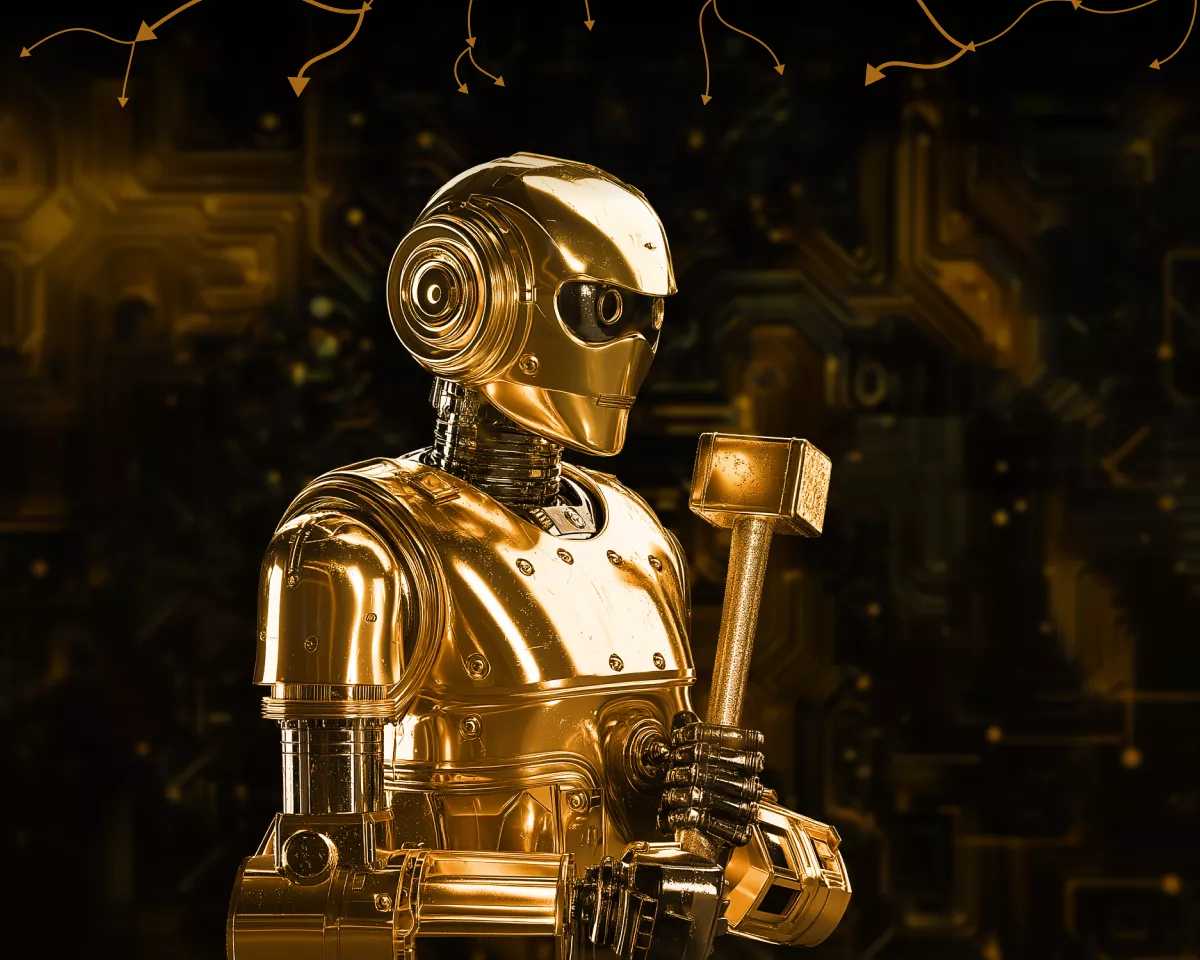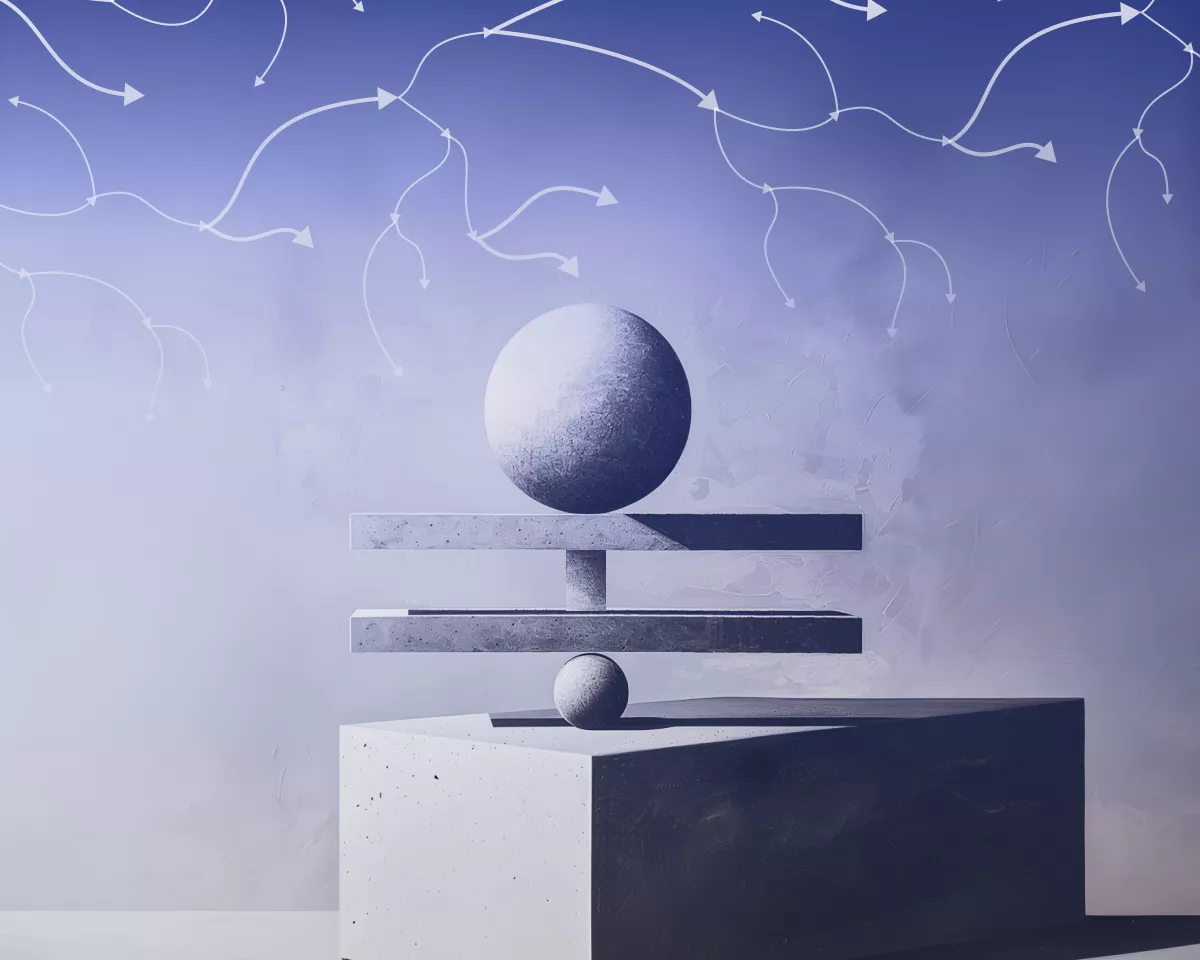BitcoinWorld AI Copyright Victory: Landmark Fair Use Ruling Boosts Generative AI Development In the rapidly evolving world of technology, where innovation often outpaces regulation, a recent legal decision has sent ripples across the artificial intelligence landscape. For those deeply immersed in the crypto space, where decentralization and digital ownership are paramount, the intersection of AI, copyright, and legal precedent holds particular significance. A landmark ruling in a federal court has brought the complex debate around AI copyright and the use of copyrighted material for training generative models into sharp focus, potentially redefining the boundaries of digital creation and ownership. A Pivotal Moment for AI and Fair Use The tech world, and particularly the burgeoning field of generative AI , has been closely watching a series of high-stakes legal battles. One such case, Bartz v. Anthropic , recently saw a significant development that could reshape the future of AI development. Federal judge William Alsup ruled that it was permissible for Anthropic, a prominent AI company, to train its sophisticated AI models on published books without explicit permission from the authors. This decision marks a crucial turning point, as it’s the first time courts have given substantial weight to AI companies’ argument that the fair use doctrine can protect them when using copyrighted works to train large language models (LLMs). This ruling is undoubtedly a major win for AI developers and tech giants. Companies like OpenAI, Meta, Midjourney, and Google, who are currently facing numerous lawsuits from authors, artists, and publishers, will likely view this as a hopeful sign. While one judge’s decision doesn’t guarantee a universal precedent, it certainly lays a foundational brick for a legal framework that might favor technological innovation over traditional creative protections. The core of these lawsuits often hinges on the interpretation of fair use , a notoriously complex and somewhat ambiguous carve-out of copyright law that hasn’t seen a significant update since 1976 – a pre-internet era, let alone before the advent of sophisticated generative AI training sets. Unpacking the Fair Use Doctrine in the Age of AI To truly understand the implications of the Anthropic lawsuit , it’s essential to grasp the nuances of the fair use doctrine. This legal principle allows for the limited use of copyrighted material without acquiring permission from the rights holders. It’s a critical balance between protecting creators and promoting creativity and innovation. Courts typically consider four factors when evaluating a fair use claim: Purpose and Character of the Use: Is the new work transformative? Does it add new meaning or expression to the original? Uses for parody, criticism, news reporting, teaching, scholarship, or research are often favored. In the context of AI training, the argument is that the AI model isn’t reproducing the original work for consumption but learning from its patterns, making it transformative. Nature of the Copyrighted Work: Is the original work factual or creative? Factual works are more likely to be considered fair use than highly creative works like novels or music. However, AI training often involves vast datasets that include both. Amount and Substantiality of the Portion Used: How much of the copyrighted work was used? Using a small, insignificant portion is more likely to be fair use than using a substantial part or the “heart” of the work. AI training often involves ingesting entire works, but the argument is that the AI doesn’t “reproduce” the work in a human-readable form, rather it extracts patterns. Effect of the Use Upon the Potential Market for or Value of the Copyrighted Work: Does the new use harm the market for the original work? This is often the most critical factor. AI companies argue that training models doesn’t compete with the original works; rather, the models generate new, distinct content. The judge in the Anthropic case seems to have leaned heavily on the “transformative” nature of AI training, viewing the AI’s learning process as distinct from direct reproduction. This interpretation suggests that an AI model, by learning from and synthesizing information, creates something fundamentally new, rather than merely copying existing works. This perspective is a significant win for the development of generative AI and its applications across various industries, from content creation to scientific research. The Dark Side of Data Acquisition: Piracy and Digital Rights While the fair use aspect of the Anthropic lawsuit received a favorable ruling for the AI company, the case isn’t entirely resolved. A crucial, and perhaps more ethically challenging, dimension of the lawsuit concerns how Anthropic acquired its training data. The group of plaintiff authors alleged that Anthropic sought to build a “central library” of “all the books in the world,” and critically, millions of these copyrighted books were downloaded for free from pirate sites. This act is unambiguously illegal, regardless of how the data is subsequently used for AI training. Judge Alsup acknowledged this distinction, stating, “We will have a trial on the pirated copies used to create Anthropic’s central library and the resulting damages.” He further clarified that Anthropic later purchasing copies of books it had initially stolen from the internet would not absolve it of liability for the theft, though it might influence the extent of statutory damages. This separates the act of acquiring the data from the act of using it for training under fair use. It highlights a critical concern for digital rights holders: even if AI training is deemed fair use, the source of the data must still be legitimate. This ongoing aspect of the case underscores the complex legal tightrope AI companies must walk. While innovation is encouraged, it cannot come at the expense of established laws regarding data acquisition and intellectual property. For the broader tech ecosystem, including those interested in the ethical implications of blockchain and digital assets, this serves as a stark reminder that the legality of data sourcing is as crucial as its application. Broader Implications for AI Copyright and Future Litigation The Bartz v. Anthropic ruling, particularly its stance on fair use for AI training, sets a significant precedent that will undoubtedly influence the dozens of similar lawsuits pending against other major tech players. If other judges follow Judge Alsup’s lead, it could provide a strong defense for companies like OpenAI and Meta, who have made similar arguments in their own legal battles concerning the use of copyrighted works to train their models. This could accelerate the development and deployment of generative AI technologies, reducing some of the legal uncertainty that has shadowed the industry. However, the unresolved issue of pirated data acquisition ensures that the debate over digital rights and AI is far from over. Authors, artists, and publishers will continue to seek avenues to protect their intellectual property and ensure they are compensated for the value their creations contribute to AI systems. This could lead to new legal theories, calls for legislative reform to update copyright law for the AI era, or the development of new licensing models specifically for AI training data. The ruling also highlights the ongoing tension between technological progress and established legal frameworks. As AI capabilities expand, the lines between inspiration, transformation, and outright infringement become increasingly blurred. This will necessitate continuous dialogue and potential re-evaluation of how intellectual property laws apply in a world where machines can generate highly sophisticated content based on vast human-created datasets. The federal judge’s decision in the Anthropic lawsuit is a landmark moment, offering a glimpse into how courts might interpret fair use in the context of generative AI training. While it offers a significant boost to AI companies, the unresolved issues surrounding the acquisition of pirated data remind us that the legal landscape for AI is still under construction. The coming trials and subsequent appeals will continue to shape the future of AI copyright and the protection of digital rights for creators worldwide. As technology continues to evolve at an unprecedented pace, the legal system faces the formidable challenge of adapting to ensure both innovation and creators’ rights are upheld in this new digital frontier. To learn more about the latest AI market trends, explore our article on key developments shaping AI models and institutional adoption. This post AI Copyright Victory: Landmark Fair Use Ruling Boosts Generative AI Development first appeared on BitcoinWorld and is written by Editorial Team



















